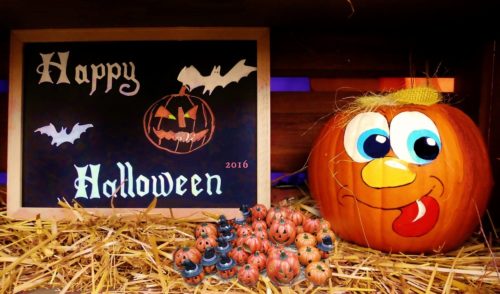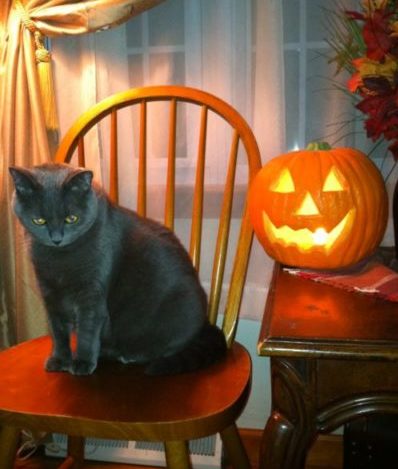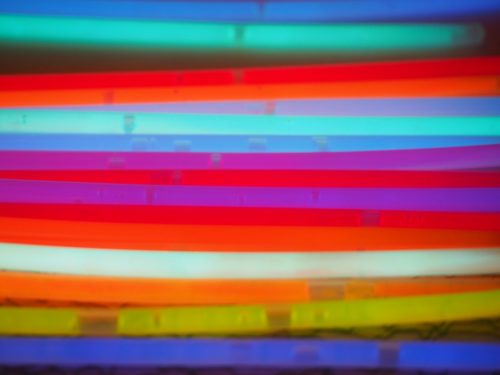
(Photo by Reverent on Pixabay under CC0)
Finding the perfect costumes, decorating the house and the yard, carving or painting the pumpkins, deciding on the goodies for the trick-or-treaters – maybe even a party or two. Halloween can mean a lot of family fun, and of course you want to include your canine family member in all the festivities.
Here are a few things to keep in mind to ensure that things are safe and enjoyable for your dog, too.
Decorations.

(Photo by billcorbett at Morguefile under CC.)
Everyone loves an excuse to decorate. These tips may be a bit obvious, but it wouldn’t hurt to repeat them anyway.
If you are decorating with lights, be sure the electrical cords are not a trip hazard – to your pooch or to anyone else. Keep the cords safely tucked away.
Spider web decorations could be a source of entanglement for your dog if low enough for them to reach.
Keep small decorations that could be swallowed or cause choking up and away from your dog.
Keep pumpkins out of reach of your pet. Pumpkin vines have a very prickly texture which could irritate your dog’s tummy if he should eat the stem or leaves. While pumpkin is beneficial to dogs in many ways (see Share the Benefits of Pumpkin With Your Dog), the seeds and flesh should be eaten only in moderation, and the hard shell should not be eaten at all.
Carved pumpkins that could be knocked down or knocked over would be more safely lit with battery-operated candles than the real thing to eliminate any fire hazard.
When the holiday is over, the spent pumpkins should be thrown away. Pumpkins deteriorate and mold quickly when carved. While the paint used to decorate uncarved pumpkins is usually nontoxic, the shell may have been treated with a shellac-like preservative.
Costume Safety.
The Humane Society of the United States (HSUS) estimates that approximately half of pet owners dress their animals for Halloween.
As cute as they may be in costume, dogs are more content to be without. Because their new outfit may require a little getting used to on their part, like new shoes for us, it’s best to let them adjust to it before trick-or-treaters are actually at your door. Let them try on their garb before the big day arrives so it’s not another new thing for them to deal with in the middle of more commotion.
Be sure that the costume does not cover their ears, eyes or nose. Any impairment of hearing, sight or breathing would be very disorienting and frightening for them.
Check that the costume has no choking hazards.
Too Much Excitement.
We love to see the kids in costume – trying to figure out who they are and enjoying the creativity and imagination of the night. Your dog, however, is probably not enjoying it. The doorbell ringing and extra activity could be just too much.
Dogs should be kept inside and away from the door to prevent any accidental escapes when you are busy handing out treats. Be sure that they have their identification tags on their collars just in case.
K. C. Theisen of HSUS says that Halloween
“noises, smells, trick-or treaters at the door and people in costumes – can overwhelm many pets.”
They recommend putting your dog in a safe, quiet room until all the activity is over.
Harmful or Poisonous Items.
Pumpkins have been mentioned above.

(Photo by Hans at Pixabay under CC0)
Many people now use glow sticks or glow jewelry for safety at night when trick-or-treating. These contain a phenyl oxalate compound (usually dibutyl phthalate) and fluorescent dye in the tube, as well as a glass vial of hydrogen peroxide. When the tube is bent, the glass vial breaks and empties the hydrogen peroxide into the tube. This causes the chemical reaction which creates light. Keep them away from your pets!
If your dog bites into one of these tubes, there is danger of cuts from the glass, as well as exposure to the chemicals inside. The phenyl oxalate has a very intense bitter taste that will cause drooling and agitation. Because the taste is so strong, it’s not likely that enough of the chemical would be ingested to be toxic. You can try giving water and food to get rid of the bad taste. However, you should call your vet if the drooling continues.
Phenyl oxalate is also a skin irritant. Take your pet into a dark room to see if there is any of the chemical on the fur. You should wash all of this off with shampoo and water to prevent licking the area and starting the cycle over again. See this article by Vet Street for more information.
Halloween treats should always be kept far away from your dog!
Chocolate is poisonous to them, especially dark chocolate. The artificial sweetener xylitol found in some sugar-free gum and candy is extremely toxic, even in small doses. Care should be taken with storage of candy after the trick-or-treaters are gone. You should call your vet if you suspect they may have eaten either of these substances.
Final Thoughts.
Halloween is supposed to be a scary night. With a little bit of planning and thought, it can be scary in a good way for everyone in the family – including your dog.
Have a happy – and safe – Halloween!
A special “thank you” to the above-mentioned photographers for making their work available for use.
My sources for this article are listed below for further reading.
Sources/Additional Reading.
https://justsimplydogs.com/2016/10/share-the-benefits-of-pumpkin-with-your-dog/
http://www.humanesociety.org/animals/resources/tips/Halloween-safety.html
www.vetstreet.com/our-pet-experts/will-biting-into-a-glow-stick-make-my-pet-sick
Like this? Share it!

